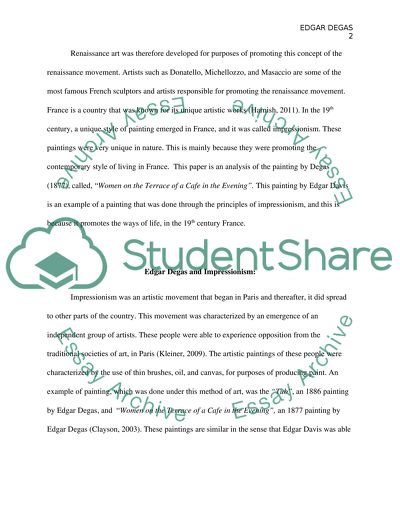Cite this document
(“Edgar Degas, Women on the Terrace of a Cafe in the Evening Essay”, n.d.)
Retrieved de https://studentshare.org/visual-arts-film-studies/1688982-edgar-degas-women-on-the-terrace-of-a-cafe-in-the-evening
Retrieved de https://studentshare.org/visual-arts-film-studies/1688982-edgar-degas-women-on-the-terrace-of-a-cafe-in-the-evening
(Edgar Degas, Women on the Terrace of a Cafe in the Evening Essay)
https://studentshare.org/visual-arts-film-studies/1688982-edgar-degas-women-on-the-terrace-of-a-cafe-in-the-evening.
https://studentshare.org/visual-arts-film-studies/1688982-edgar-degas-women-on-the-terrace-of-a-cafe-in-the-evening.
“Edgar Degas, Women on the Terrace of a Cafe in the Evening Essay”, n.d. https://studentshare.org/visual-arts-film-studies/1688982-edgar-degas-women-on-the-terrace-of-a-cafe-in-the-evening.


